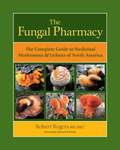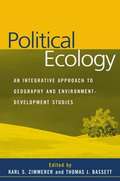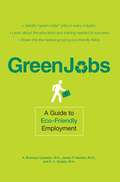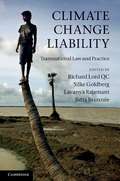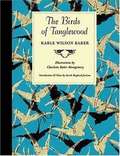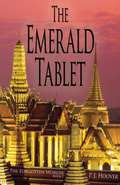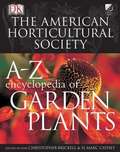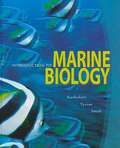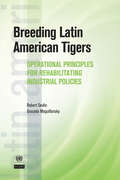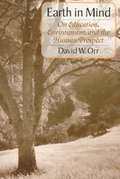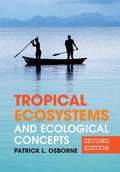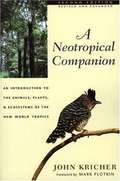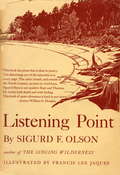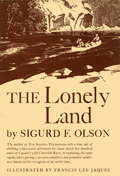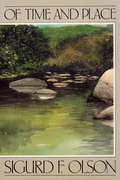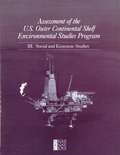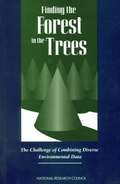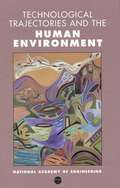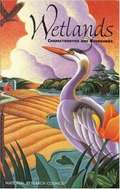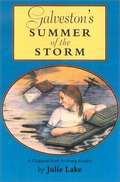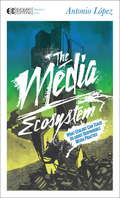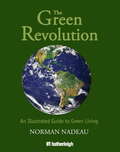- Table View
- List View
The Fungal Pharmacy
by Robert Rogers Solomon P. WasserIn The Fungal Pharmacy, noted herbalist Robert Rogers introduces readers to more than 300 species of medicinal mushrooms and lichens found in North America. These fungi, Rogers explains, have the capacity to heal both the body and, through the process of myco-remediation, the planet itself. Throughout the book, he documents their success in optimizing the immune system and treating a wide range of acute and chronic diseases, including cardiovascular, respiratory, and liver problems, blood sugar disorders, cancer, and obesity.Entries discuss the mushroom or lichen's medicinal traits and properties, including active chemical components, preparation methods (including extracts, essences, and essential oils), and historical as well as modern-day usage. Two hundred full-color photos and thorough descriptions make identification easy for the reader. Rogers also delves into the cultural, religious, and literary significance of each mushroom, featuring fascinating tidbits about each one's etymology and history.
Political Ecology
by Karl Zimmerer Thomas J. BassettThis volume offers a unique, integrative perspective on the political and ecological processes shaping landscapes and resource use across the global North and South. Twelve carefully selected case studies demonstrate how contemporary geographical theories and methods can contribute to understanding key environment-and-development issues and working toward effective policies. Topics addressed include water and biodiversity resources, urban and national resource planning, scientific concepts of resource management, and ideas of nature and conservation in the context of globalization. Giving particular attention to evolving conceptions of nature-society interaction and geographical scale, an introduction and conclusion by the editors provide a clear analytical focus for the volume and summarize important developments and debates in the field.
All My Patients Kick and Bite: More Favorite Stories From a Vet's Practice
by Jeff WellsThe highly amusing, uplifting and entertaining follow-up to All My Patients Have Tales. In this second collection by our intrepid vet, Jeff Wells has his work cut out for him when he learns that llamas do not take kindly to having their toenails trimmed, dog owners in the medical field can be a real pain, Scottish Highland cattle stick together and just might run a vet out of their enclosure, and fixing an overly amorous burro often needs to be prioritized. Told with Wells's trademark humor and gentle touch, these and many other heartwarming, heartbreaking, funny and strange stories will give readers a whole new appreciation for those who care for our pets.
Green Jobs: A Guide to Eco-friendly Employment
by A. Bronwyn Llewellyn James P. Hendrix K. C. GoldenGreen Jobs will help you to find a job you like--and that'll make the world a better place.
The Everything Guide to Foraging
by Vickie ShuferFrom the field to your table-- how to find and prepare wild foods. This is your one-stop reference for identifying and harvesting the wild fruits and vegetables that grow in fields, forests, and even on your own lawn.
Climate Change Liability
by Silke Goldberg Lavanya Rajamani Richard Lord Jutta BrunnéeAs frustration mounts in some quarters at the perceived inadequacy or speed of international action on climate change, and as the likelihood of significant impacts grows, the focus is increasingly turning to liability for climate change damage. Actual or potential climate change liability implicates a growing range of actors, including governments, industry, businesses, non-governmental organisations, individuals and legal practitioners. Climate Change Liability provides an objective, rigorous and accessible overview of the existing law and the direction it might take in seventeen developed and developing countries and the European Union. In some jurisdictions, the applicable law is less developed and less the subject of current debate. In others, actions for various kinds of climate change liability have already been brought, including high profile cases such as Massachusetts v. EPA in the United States. Each chapter explores the potential for and barriers to climate change liability in private and public law.
The Birds of Tanglewood
by Karle Wilson Baker Sarah Ragland Jackson Charlotte Baker MontgomeryIn the intimate language of one who watched birds daily, Karle Wilson Baker brought readers face to face with the wonders of the East Texas woods in the 1930s. She wrote about tiny warblers, industrious chickadees, and purple finches; the aery trills and tantalizing color flashes of the hummingbirds; the bell tones of the woodthrush; the daily visits and rare drop-ins of the prolific bird life of the region. In a daily diary she kept throughout her life, Baker recorded her observations of the many birds that lived in the heavily wooded setting of her Nacogdoches home, called Tanglewood. When her family moved from the house, she collected her essays on bird life into this volume, illustrated by her daughter Charlotte and published in 1930. Her little classic speaks with the voice of her times to readers today who enjoy their avian companions.
The Emerald Tablet (The Forgotten Worlds #1)
by P. J. HooverBenjamin and his best friend Andy love being different from the other kids. They like being able to read each others mind and use their telekinesis to play tricks. In fact, they are getting set to spend their entire summer doing just that when Benjamin's mirror starts talking.
The American Horticultural Society A to Z Encyclopedia of Garden Plants (Revised American Edition)
by Christopher Brickell H. Marc CatheyAmerican Horticultural Society A to Z Encyclopedia of Garden Plants is a comprehensive, detailed, and illustrated alphabetical guide to some 15,000 ornamental plants and an essential reference for all gardeners and horticulturists. Easy to Use Plants are arranged alphabetically by their botanical names for fast, straightforward access, and previous names and common names appear as cross-references throughout the main text.
Introduction to Marine Biology, 3rd edition
by George Karleskint Richard Turner James W. SmallImmerse yourself in INTRODUCTION TO MARINE BIOLOGY and quickly learn the content of the course. While taking an ecological approach, this biology text provides succinct coverage of the content while the photos and art work clearly illustrates key concepts. Studying is made easy with phonetic pronunciations, a running glossary of key terms, end-of-chapter questions, and websites provided at the end of the chapter, and lists of related articles found throughout the text.
Breeding Latin American Tigers: Operational Principles for Rehabilitating Industrial Policies in the Region
by Robert Devlin Graciela MoguillanskyThis book is motivated by the emerging rehabilitation of industrial policies as a tool for supporting economic transformation and high rates of growth in developing countries. It argues that underperforming disciples of the Washington Consensus' 'market fundamentalism' should learn and practice the art of systemic industrial policies, which requires a medium-long term strategic perspective and intelligent proactive state interventions in markets. However, it also stresses that rehabilitation requires that industrial policies be developed and implemented in a context of home- grown public-private alliances that avoid state 'capture' by special interests. It first examines the 'how' of industrial policy in the public sectors of ten non-Latin American countries in Asia, Europe, and Oceania that have been successful in promoting economic catch-up with rich countries, or have performed better than Latin American countries with similar resource endowments. The book defines '10+1' generic First Principles for the use, design, and execution of modern industrial policies, and then examines the experiences of nine Latin American and Caribbean governments against these First Principles. The authors identify large gaps in the organizational and operational effectiveness of their public sectors, and suggest ways to close these gaps.
Earth in Mind: On Education, Environment, and the Human Prospect
by David W. OrrOrr (environmental studies and politics, Oberlin College) presents the tenth anniversary edition of his text addressing educational reform from an environmental perspective. In a collection of 23 essays, written for various purposes and audiences between 1990 and 1993, Orr argues that, where educational debates about standards and reforms have centered around preparing students to compete in a global economy, an equally important concern should be teaching students the ecological context in which humans live, to develop in them an ethical view of the world and their obligations to it. The tenth edition includes a brief new introduction and a new final chapter offering "hope in hard times. " Annotation ©2004 Book News, Inc. , Portland, OR (booknews. com)
The World's Largest Plants: A Book About Trees
by Susan BlackabyHear the wind rustling through the maple? See the rings on the old tree trunk? Come along on a vivid introduction to the majestic giants of the plant world.
Tropical Ecosystems and Ecological Concepts
by Patrick OsborneTropical habitats cover over one third of the Earth's terrestrial surface and harbor much of its biodiversity, with many areas rich in endemic species. However, these ecosystems are under significant and growing threat from issues such as deforestation, land degradation and ocean acidification. This introductory textbook provides a comprehensive guide to the major tropical biomes. It is unique in its balanced coverage of both aquatic and terrestrial systems and in its international scope. Each chapter is built around a particular tropical ecosystem, with descriptive case studies providing a framework around which ecological concepts and applied ecological topics are presented. This second edition has been thoroughly updated to reflect recent advances in the field and includes a greater focus on the impact of global climate change. The text is supported throughout by boxes containing supplementary material and is illustrated with over 200 clear, simple line diagrams, maps and photographs.
A Neotropical Companion: An Introduction to the Animals, Plants, and Ecosystems of the New World Tropics (2nd Edition, Revised and Expanded)
by John KricherA Neotropical Companion is an extraordinarily readable introduction to the American tropics, the lands of Central and South America, their remarkable rainforests and other ecosystems, and the creatures that live there. It is the most comprehensive one-volume guide to the Neotropics available today. Widely praised in its first edition, it remains a book of unparalleled value to tourists, students, and scientists alike. This second edition has been substantially revised and expanded to incorporate the abundance of new scientific information that has been produced since it was first published in 1989. Major additions have been made to every chapter, and new chapters have been added on Neotropical ecosystems, human ecology, and the effects of deforestation. Biodiversity and its preservation are discussed throughout the book, and Neotropical evolution is described in detail. This new edition offers all new drawings and photographs, many of them in color. As enthusiastic readers of the first edition will attest, this is a charming book. Wearing his learning lightly and writing with ease and humor, John Kricher presents the complexities of tropical ecology as accessible and nonintimidating. Kricher is so thoroughly knowledgeable and the book is so complete in its coverage that general readers and ecotourists will not need any other book to help them identify and understand the plants and animals, from birds to bugs, that they will encounter in their travels to the New World tropics. At the same time, it will fascinate armchair travelers and students who may get no closer to the Neotropics than this engagingly written book.
Listening Point
by Sigurd F OlsonListening Point is about the spiritual human connection to the environment. "Each time I have gone there I have found something new which has opened up great realms of thought and interest", Sigurd F. Olson writes. "For me it has been a point of discovery and, like all such places of departure, has assumed meaning far beyond the ordinary". Considered by some to contain Olson's most vivid and moving passages, Listening Point is the nature lover's companion for hearing the depth and beauty of the great outdoors.
Lonely Land
by Sigurd F. OlsonThe Lonely Land is a tribute to the unspoiled beauty of the deep wilderness and the rugged individuals past and present who take up a canoe paddle to explore it.
Of Time and Place
by Sigurd F. OlsonOf Time and Place is a legacy from one of the best-loved nature writers of our time. In this, his last book, completed just before his death, Sigurd F. Olson guides readers through his wide-ranging memories of a lifetime dedicated to the preservation of the wilderness. Like his other best-selling books, Of Time and Place is filled with beauty, adventure, and wonder. Olson recalls his many friendships of trail and woods and portage, his favorite campsites, the stories behind the artifacts and mementos hanging in his cabin at Listening Point. Whether he is remembering canoe trips with his friends, admiring the playful grace of the otter, or pondering the Earth's great cycles of climatic change, these moving and evocative essays reaffirm Olson's stature as one of the greatest nature writers of this century.
Assessment of the U.S. Outer Continental Shelf Environmental Studies Program: III. Social and Economic Studies
by Socioeconomics PanelThis is the third of four volumes from the Committee to Review the Outer Continental Shelf (OCS) Environmental Studies Program (ESP). The first two dealt with physical, oceanographic, and ecological aspects of the program.This book presents the findings of the panel's investigation of the social and economic relevance of OCS oil and gas activities and the social and economic aspects of the ESP.It describes the potential effects of OCS activities on the human environment, presents an ideal socioeconomic studies program, and comments on the current program in the Atlantic, Gulf of Mexico, Pacific, and Alaska regions.
Finding the Forest in the Trees: The Challenge of Combining Diverse Environmental Data
by Committee for a Pilot Study on Database InterfacesDuring the last few decades of the 20th century, the development of an array of technologies has made it possible to observe the Earth, collect large quantities of data related to components and processes of the Earth system, and store, analyze, and retrieve these data at will. Over the past ten years, in particular, the observational, computational, and communications technologies have enabled the scientific community to undertake a broad range of interdisciplinary environmental research and assessment programs. Sound practice in database management are required to deal with the problems of complexity in such programs and a great deal of attention and resources has been devoted to this area in recent years. However, little guidance has been provided on overcoming the barriers frequently encountered in the interfacing of disparate data sets. This book attempts to remedy that problem by providing analytical and functional guidelines to help researchers and technicians to better plan and implement their supporting data management activities.
Technological Trajectories and the Human Environment
by Jesse H. Ausubel H. Dale LangfordTechnological Trajectories and the Human Environment provides a surprising projection of a much greener planet, based on long-range analysis of trends in the efficient use of energy, materials, and land.The authors argue that we will decarbonize the global energy system and drastically reduce greenhouse gas emissions. We will dematerialize the economy by leaner manufacturing, better product design, and smart use of materials. We will significantly increase land areas reserved for nature by conducting highly productive and environmentally friendly agriculture on less land than is used today, even as global population doubles.The book concludes that the technological opportunities before us offer the possibility of a vastly superior industrial ecology. Rich in both data and theory, the book offers fresh analyses essential for everyone in the environmental arena concerned with global change, sustainable development, and profitable investments in technology.
Wetlands: CHARACTERISTICS AND BOUNDARIES
by Committee on Characterization of WetlandsWetlands has become a hot word in the current environmental debate. But what does it signify? In 1991, proposed changes in the legal definities of wetlands stirred controversy and focused attention on the scientific and economic aspects of their management.This volume explores how to define wetlands. The committee--whose members were drawn from academia, government, business, and the environmental community--builds a rational, scientific basis for delineating wetlands in the landscape and offers recommendations for further action.Wetlands also discusses the diverse hydrological and ecological functions of wetlands, and makes recommendations concerning so-called controversial areas such as permafrost wetlands, riparian ecosystems, irregularly flooded sites, and agricultural wetlands. It presents criteria for identifying wetlands and explores the problems of applying those criteria when there are seasonal changes in water levels.This comprehensive and practical volume will be of interest to environmental scientists and advocates, hydrologists, policymakers, regulators, faculty, researchers, and students of environmental studies.
Galveston's Summer of the Storm
by Julie LakeA fourteen-year-old girl from Austin spends the summer of 1900 at her grandmother's home in Galveston and is caught in the Great Hurricane of September 8, 1900.
The Media Ecosystem
by Antonio LopezIn The Media Ecosystem, Antonio Lopez draws together the seemingly disparate realms of ecology and media studies to present a fresh and provocative interpretation of the current state of the mass media--and its potential future. Lopez explores the connections between media and the environment, arguing that just as the world's powers have seized and exploited the physical territories and natural resources of the earth, so, too, have they colonized the "cultural commons"--the space of ideas that everyone shares. He identifies the root of the problem in the privileging of "mechanistic" thinking over ecological intelligence, which recognizes that people live in a relationship with every other living thing on the planet. In order to create a more sustainable media ecosystem--just like the preservation of organic ecosystems--we must reconnect our daily media activities to their impact on others and the environment. To become "organic media practitioners," we must become aware of the impact of media use on the environment; recognize media's influence on our perception of time, space, and place; understand media's interdependence with the global economy; be conscious of media's interaction with cultural beliefs; and develop an ethical framework in order to act upon these understandings. Above all, Lopez calls for media producers and consumers alike to bring a sense of ritual and collaboration back to the process of communication, utilizing collective intelligence and supporting a new culture of participation. Containing both wide-reaching analysis and practical tips for more conscious media use, The Media Ecosystem is designed for all those who seek a more sustainable future.From the Trade Paperback edition.ent. Be aware of the environments that engage your attention. What do these environments (be they computer interfaces, shopping malls, churches, or forests) demand of your awareness? What possibilities or restrictions do they afford? · Know your gadget. Our media gadgets are part of vast networks of material extraction, production, and waste. Disengage those systems of power that are enabling environmental destruction and injustice. · Know your connectivity. Every screen is a portal. Such portals are nodes into vast possibilities of experience. Enter into these spaces with eyes wide open and feet on the ground. You are the medium for the planet's spirit. Channel wisely.
The Green Revolution
by Norman NadeauEver Wonder What A Green Renewable Sustainable World Would Look Like?With the state of our world and its limited resources, more and more people are trying to lead a greener lifestyle in order to do their part. The Green Revolution provides comprehensive information associated with adopting daily practices that will ultimately sustain, not deplete, precious natural materials in an ever-growing population.Renewable energy expert Norman Nadeau leads by example as he details how he has committed his life to living green. From the application of solar and wind turbine technology, to recovering energy embedded in places one may not expect (such as animals' manure), The Green Revolution highlights the highly sustainable system Norman Nadeau developed for his family farm.The Green Revolution serves as a broad introduction for those who want to conserve rather than squander. At this very important turning point in our planet's history, this book offers the principles by which anyone can live in the most sustainable way possible.
